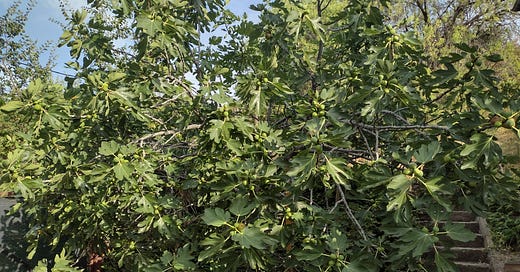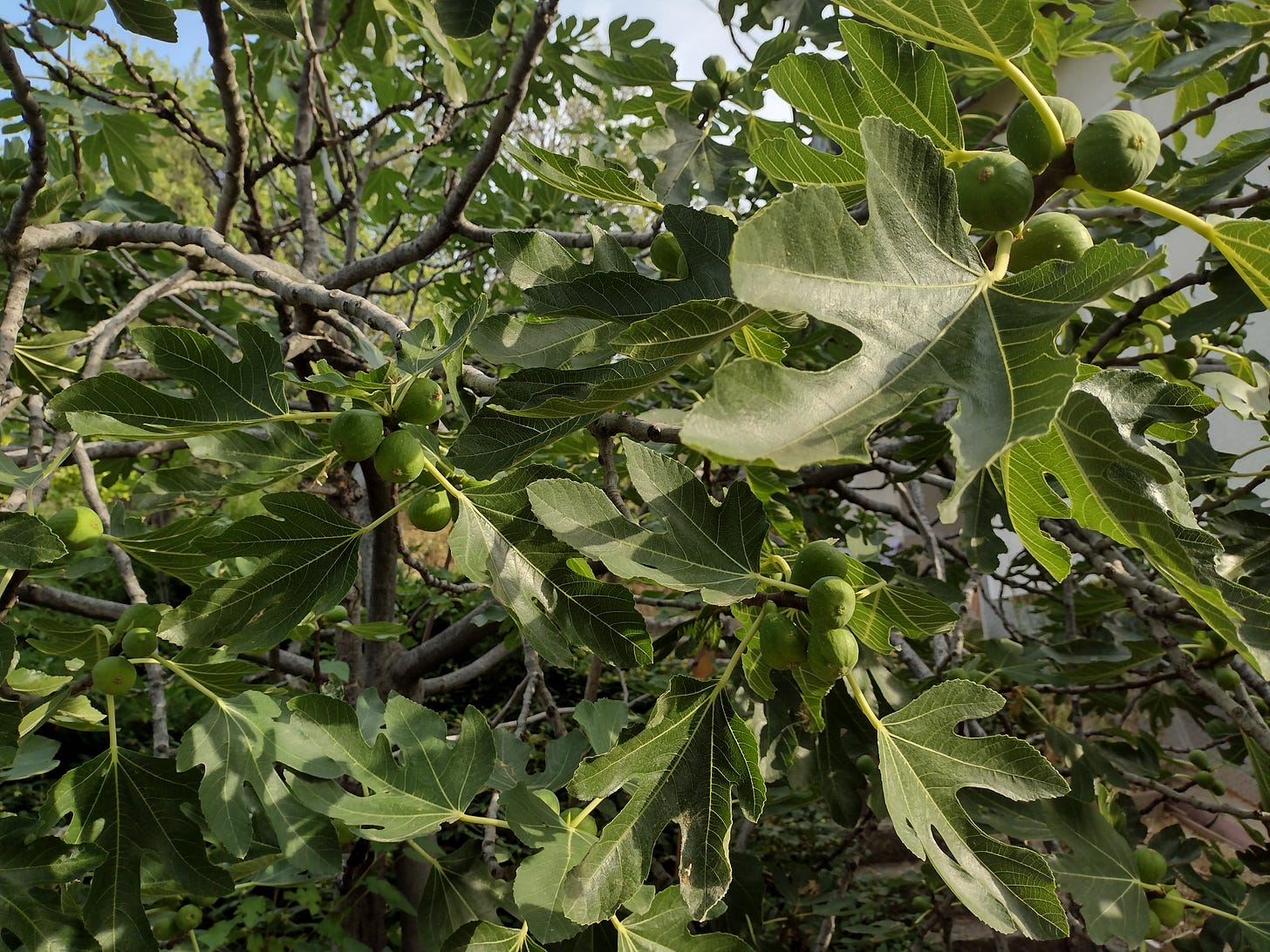Every year in mid-August, fig season descends upon us. Other trees can be fickle and only fruit every other year or just quit and die unexpectedly but not the figs. The figs deliver every year. And they deliver copiously.
We have two fig trees in the garden. We suspect they came with the land because nobody would plant two trees so close to each other their stewards would for years think they were one tree. Sadly, it actually is now one tree because the second one has dried up. Not sadly, it has sprouted new branches that will grow into a new tree. Figs are amazing.
There is another fig tree on the road right outside and then another, a little further up the road. There are fig trees leaning over garden walls and fig trees sweeping the sidewalks in the village. Fig trees here are as common as weeds. Figs in Sofia cost an arm and a leg for half a dozen. It’s a funny world.
Because fig season never fails to deliver, we tend to eat ourselves into a happy stupor for two weeks, after which we give up and let whatever figs have remained uneaten fall and rot because, yes, by that point even the birds have eaten themselves into a happy stupor.
Two years ago we said “Enough”. We decided to make fig preserve. The first batch was so sweet it turned into some sort of hard glue with fig flavour that you needed a chisel and hammer to get out of the jar. The second batch turned okay. Yet tonnes of figs remained.
We bought a dehydrator. Well, we actually got that for that year’s apricot season but it served well for figs, too. We pureed them, spread them on a piece of parchment and in they went for a few hours to produce a healthy little snack to go with bigger and more substantial snacks in the winter. Once dried, the fig, hehe, leaves, were shaped into neat rolls and put into jars. Incidentally, a great cure for lazy bowels.
This year, we have high hopes that we’ll be able to go through more figs instead of letting them rot. This year is the first year Cat will eat figs on par with her parents because she has discovered the wonderful world of fruit. It only took 12 years and massive amounts of fruit eaten by her parents in an effort to set a personal example.
This year, we’re making fig jam, for a change and also because the half a dozen jars of preserve we made two years ago sit there uneaten because of course they would — preserves are for making, not for eating.
The jam will be used not only for eating as is but as an ingredient in one of Cat’s favourite spreads: smusam. She coined the name to combine susam, the word for sesame in Bulgarian and several other languages, one of them Turkish, and the Bulgarian word for fig, which is смокиня [smokeenia].
The ingredients: tahini and some fig syrup that was a leftover from the last preserve-making session and we had no idea what to do with it until we accidentally saw the tahini in the fridge. The tastes combine surprisingly well and there’s the bonus of it being both sweet and good for you.
Speaking of things being good for you, figs are, of course, like most fruits, very good for you. You’ve got your minerals, you’ve got your antioxidants that are apparently still in fashion, they might be good for the blood pressure and, of course, they’re great for better digestion.
They’re also great in cakes and in appetisers, doing equally well in sweet and savoury company. Like any other fruit, around here figs are also turned into brandy or wine because there’s a local school of thought with a significant following that says fruits are not just good for eating, they’re also good for drinking and they don’t mean smoothies.
Fig season begins slowly. It creeps up on us with a ripening fig here and a ripe one there. A week later, there are hundreds ripening at the same time. Time to take out the jam pot and the dehydrator.






How wonderful! You are truly blessed by abundance.
I’m very envious. I have two figs trees but for the last few years they have not become plump and juicy.